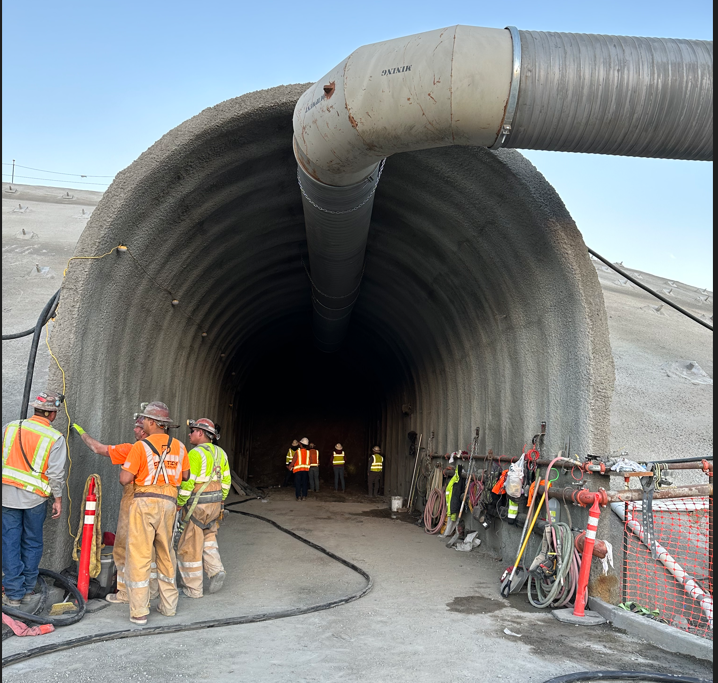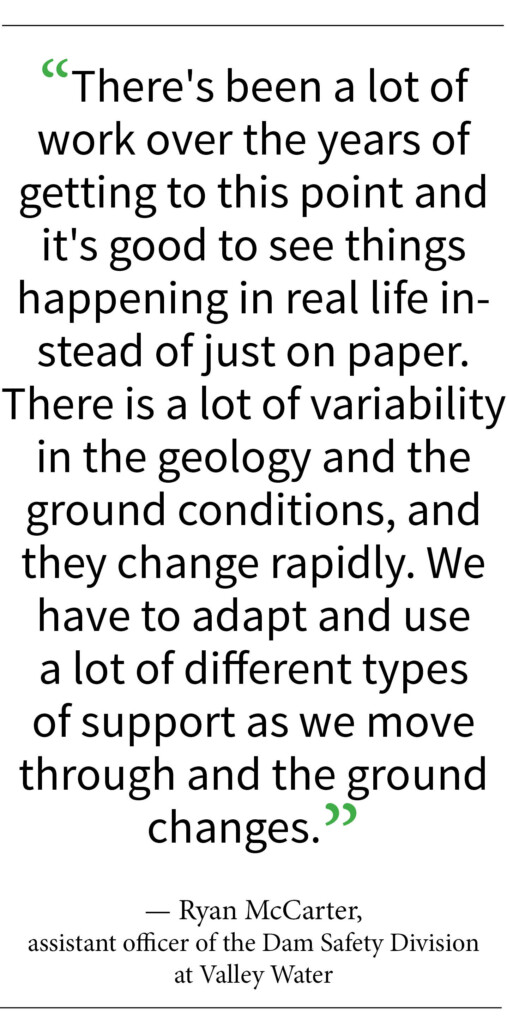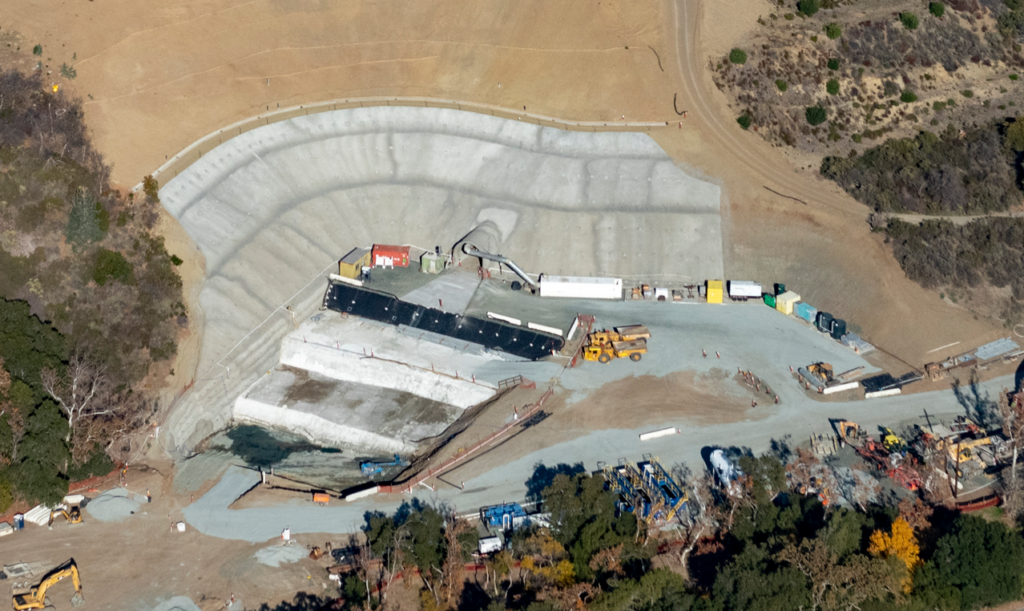Gilroy and South Bay Extended Weather Forecast
Take a Hike … with Mike Monroe: Celebrate Earth Day while learning about vineyard sustainability
Click here to find more stories published in the April 17 - 30, 2019 issue of Gilroy Life This year marks the 49th anniversary of Earth Day. What better way to toast Mother Nature than [...]
Coyote Valley: Take a hike among the wildflowers that dot South Valley’s foothills
Hikes and other activities offer magnificent panoramic views from Coyote Ridge, Diablo Foothills Published in the March 20 - April 2, 2019 issue of Gilroy Life Check out the carpet of wildflowers on a [...]
Coyote Valley: Take a hike among the wildflowers that dot South Valley’s foothills
Hikes and other activities offer magnificent panoramic views from Coyote Ridge, Diablo Foothills Published in the March 20 - April 2, 2019 issue of Gilroy Life Check out the carpet of wildflowers on a [...]
Anderson Dam retrofit hits a major milestone with enlarged tunnel
Project aims to restore county’s largest reservoir to service by 2032
![]()

Photo courtesy Valley Water
The western end of the outlet tunnel on Anderson dam is under construction. When complete it will be capable of releasing water 10 times faster than in the past.
By Calvin Nuttall
The Anderson Dam Seismic Retrofit Project began a major new phase to bring the aging structure into compliance with California safety standards.
 Valley Water’s $1.2 billion construction job hit an important milestone when workers began digging the outlet tunnel in November — and have made significant headway. The tunnel will allow the water level to be quickly lowered in case of emergencies.
Valley Water’s $1.2 billion construction job hit an important milestone when workers began digging the outlet tunnel in November — and have made significant headway. The tunnel will allow the water level to be quickly lowered in case of emergencies.
“Being able to get a large amount of water out of the reservoir helps us lower the level in case there is an emergency event, such as an earthquake or a large storm,” said Ryan McCarter, assistant officer of the Dam Safety Division at Valley Water. “We’ll have a pipe with a much larger capability of releasing water.”
Once completed the outlet will be able to transfer water from the reservoir into Coyote Creek at more than 10 times faster than before.
“Currently, it’s capable of only about 450 cubic feet per second,” McCarter said. “We’ll be able to get up to 2,000 cubic feet per second during this stage, and when the project is done we can move up to 6,000 CFS.”
This will help to prevent large overflows of water during heavy rainstorms. This happened when the reservoir reached capacity in 2017 for the first time in more than a decade. The flood of more than 20,000 gallons a minute of rainwater broke a levee north of Cochrane Road. The water reached U.S. 101, stopping northbound traffic and creating intense gridlock. It also flooded neighborhoods in San Jose, damaging many homes.
The new outlet tunnel will allow engineers to release excess reservoir water in a controlled fashion.
Excavation began Nov. 9 on the 1,750-foot long, 20-foot wide tunnel. As of mid-December, workers have made it more than 100 feet into the dam’s bedrock. Progress proceeds at a rate of around 10 feet per day, McCarter said.
The excavation does not use a boring machine or any drill-and-blast techniques, he said. The bedrock so far is a relatively weak rock and easily excavated.
“There’s been a lot of work over the years of getting to this point, and it’s good to see things happening in real life instead of just on paper,” McCarter said. “There is a lot of variability in the geology and the ground conditions, and they change rapidly. We have to adapt and use a lot of different tools, using different types of support as we move through and the ground changes.”
To show the project’s progress, Valley Water hosted a Dec. 15 tour of the site for members of the media.
Workers built Anderson Dam in 1950 using materials and techniques no longer considered safe during a major earthquake.
“We are having to rebuild the embankment itself,” McCarter said. “There are some seismic concerns with the earth materials that were placed back then. So we need to replace those in a more high-tech fashion, with state-of-the-art technology.”
 In 2016, geologists found the risk of the dam collapsing might be higher than initially thought if a magnitude 7.25 earthquake on the Calaveras Fault occurred centered less than 1.25 miles from the dam, or a magnitude 6.6 earthquake on the Coyote Creek Fault centered beneath the dam.
In 2016, geologists found the risk of the dam collapsing might be higher than initially thought if a magnitude 7.25 earthquake on the Calaveras Fault occurred centered less than 1.25 miles from the dam, or a magnitude 6.6 earthquake on the Coyote Creek Fault centered beneath the dam.
A quake at such a high magnitude might cause the dam to rupture, resulting in up to a 30-foot wall of water erupting from the reservoir. The flood would spread as far as San Jose and Monterey, devastating much of Morgan Hill and Gilroy on its way to the ocean.
Based on the seismic analysis, the Federal Energy Regulatory Commission and the California Division of Safety of Dams restricted the reservoir’s capacity to 3 percent in 2020.
The project’s price tag of $1.24 billion (adjusted for inflation) nearly doubled its cost of $648 million before its expansion earlier this year. Valley Water attributes the need for this expansion to factors including new environmental regulations, an expansion of the project’s timeline, inflation, and a shortage of construction workers. The original price tag was $200 million in 2012.

An aerial view of the tunnel worksite by a drone. Photo courtesy Valley Water
Anderson Reservoir serves as an important part of the valley’s water supply, said John Varela, director of Valley Water’s District 1. He also emphasized the need for residents to continue to be careful with their water usage during the present drought.
“It’s taken 90,000 acre-feet of water storage out of the picture,” Varela said of the project’s draining of the reservoir. (An acre-foot of water is enough to cover an acre of area to a depth of one foot, equal to just under 325,851 U.S. gallons.)
The largest of Valley Water’s 10 reservoirs, Anderson can hold as much water as the other nine combined.
In total, Valley Water has 600,000 acre-feet of water stored between its reservoirs and groundwater.
Estimated before the recent rains, the county has about a two-year supply of water, so long as residents conserve.
Residents also need to cut back on their irrigation, which accounts for around 60 percent of water use at home, Varela said.
“We have programs at Valley Water to help residents change their landscape out, for seasonal and more drought-resistant plants, and even change their irrigation to drip versus spray,” he said.
Valley Water also works to mitigate its supply shortages by importing water from other regions of the state, spending $20 million a year.
“That water comes from the Sierras and other reservoirs and dams,” Varela said. “That is conveyed to the San Luis Reservoir, and then down into the valley. That goes into our storage (reservoirs), and also into our groundwater through our percolation ponds.”
Percolation ponds have permeable ground materials that allow water to sink into aquifers, replenishing the groundwater supply. Aquifers have a much greater capacity to store water than surface reservoirs. Valley Water uses percolation to prevent water loss from runoff. This helps to offset the temporary reduction in storage capacity while the dam undergoes its retrofit.
Varela said the projected completion of the new Anderson Dam in 2032 is essential to the long-term future of Silicon Valley.
“Our valley is growing, we have more people coming in, we see more housing throughout the valley, so water supply is of immense importance to everybody,” he said. “We sit down with all 15 cities during their General Plan updates, and we always plan to have the water necessary for their development. We’re always at the table, and so far we have been able to accomplish that.”
Calvin Nuttall is a Morgan Hill resident who has a passion for science and politics.


